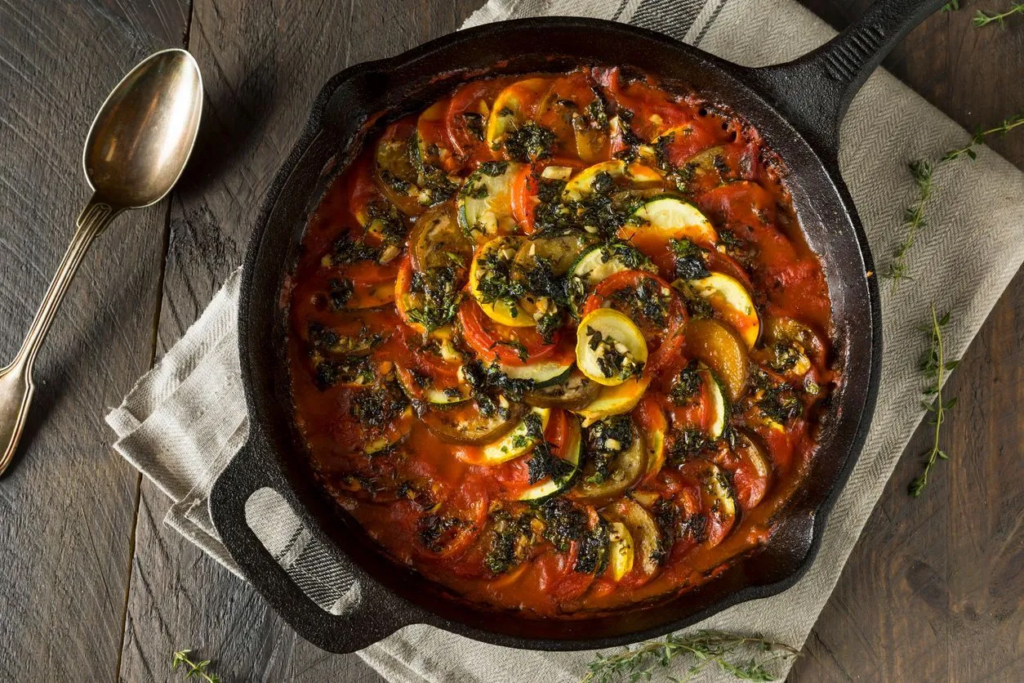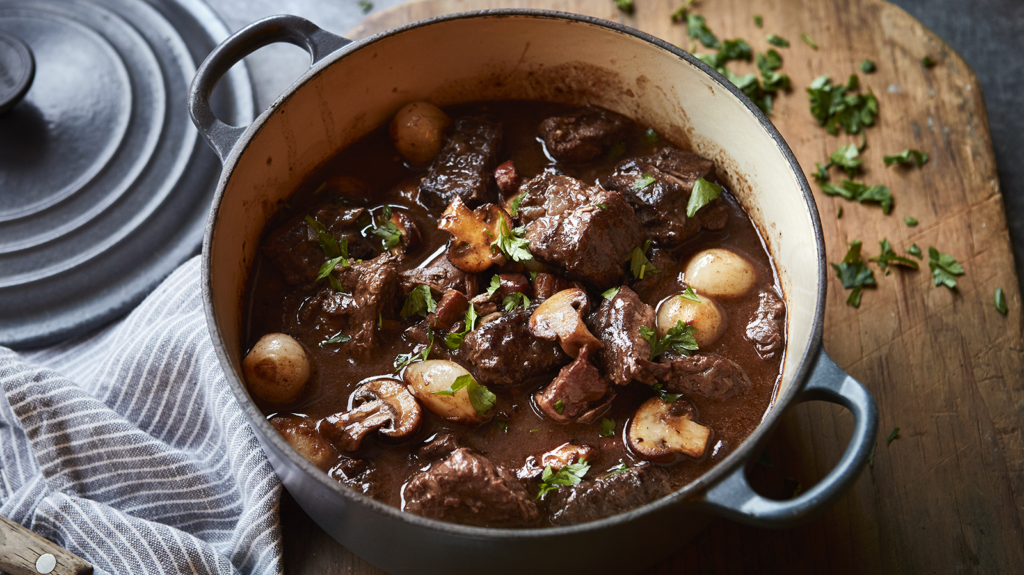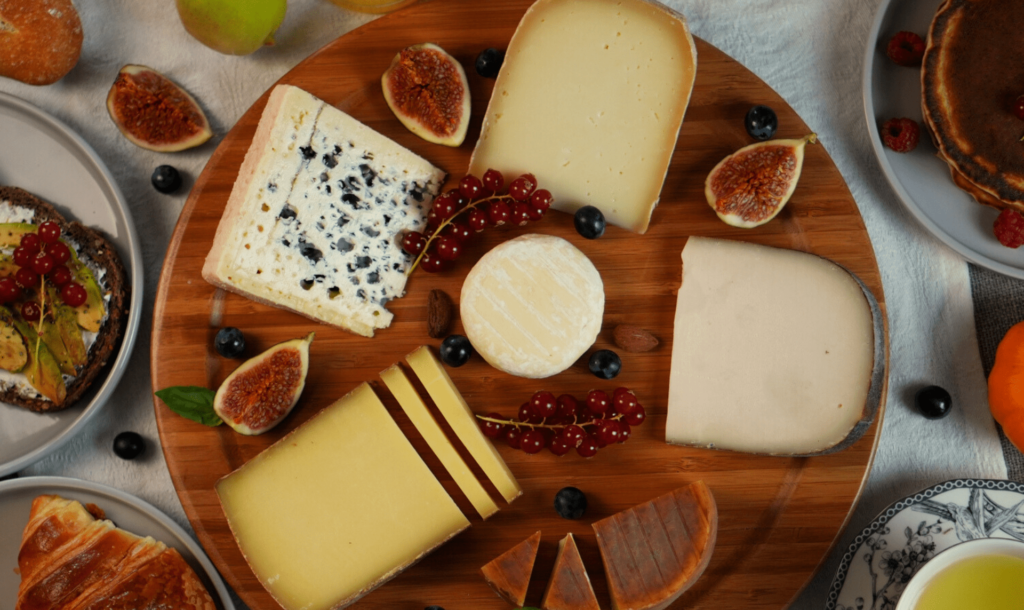French food. France is synonymous with gourmet cuisine and is globally celebrated for its rich culinary traditions. From hearty regional dishes to delicate pastries, French food is an integral part of the country’s cultural identity. Whether you’re wandering through the streets of Paris, exploring the countryside of Provence, or enjoying the coastal breeze in Brittany, the variety of French cuisine offers something for every palate. In this article, we’ll take you on a culinary journey through the top foods you must try in France, along with some travel hacks, tips, and advice to enhance your gastronomic experience.
1. Croissants and Pain au Chocolat

No visit to France is complete without indulging in a freshly baked croissant or a pain au chocolat. These buttery, flaky pastries are a staple of French breakfasts and can be found in almost every bakery across the country. The key to a perfect croissant is its layers, which are achieved by repeatedly folding and rolling the dough with butter.
Tip/ Hack: To find the best croissants, look for bakeries with long queues in the morning—locals know where to get the freshest pastries. Avoid touristy spots where the quality might not be as high.
Enjoy your croissant with a café au lait (coffee with milk) for a true Parisian experience. If you’re in Paris, try the croissants at Du Pain et des Idées, a bakery renowned for its artisanal approach.
2. Ratatouille, A Taste of Provence

Ratatouille is a classic Provençal dish that celebrates the flavors of the Mediterranean. It’s a vegetable stew made with tomatoes, zucchini, eggplant, bell peppers, onions, garlic, and a mix of herbs like thyme and basil. This dish is typically served as a side, but it can also be a hearty vegetarian main course.
Tip/ Hack: The best ratatouille is found in local, family-run restaurants in Provence. Look for places that emphasize seasonal, fresh ingredients.
Pair ratatouille with a glass of rosé from Provence for a truly authentic meal. If you’re visiting Nice, make sure to try the ratatouille at La Merenda, a small but famous restaurant that focuses on traditional Niçoise cuisine.
3. Boeuf Bourguignon, Dish from Burgundy

Boeuf Bourguignon is a rich beef stew originating from the Burgundy region of France. The dish is slow-cooked with red wine, garlic, onions, mushrooms, and bacon, resulting in a tender, flavorful meal. It’s a perfect dish for colder months and is often served with potatoes or a crusty baguette to soak up the delicious sauce.
Tip/ Hack: For an authentic experience, try Boeuf Bourguignon in a traditional Burgundy bistro. Many restaurants offer this dish as part of a set menu, which is often more economical than ordering à la carte.
Enjoy Boeuf Bourguignon with a glass of Pinot Noir, the signature wine of Burgundy, which perfectly complements the dish’s rich flavors. If you’re in Dijon, visit Le Bistrot des Halles for an unforgettable meal.
4. Crêpes, Sweet Savory Delights from Brittany

Crêpes are thin pancakes that can be filled with a variety of ingredients, either sweet or savory. In Brittany, where crêpes originated, the savory version is called a galette, made with buckwheat flour and typically filled with ham, cheese, and eggs. Sweet crêpes are often filled with Nutella, fruit, or simply dusted with sugar and lemon juice.
Tip/ Hack: In Brittany, you’ll find the most authentic crêpes in small, family-run crêperies. These places often have a charming, rustic ambiance and use traditional methods to prepare the crêpes.
For a classic experience, order a galette complète (ham, cheese, and egg) followed by a sweet crêpe with caramel beurre salé (salted butter caramel). Pair your meal with a bowl of Breton cider for the perfect accompaniment.
5. Foie Gras, Luxurious French Delicacy

Foie gras, a luxury food product made from the liver of a duck or goose, is one of the most iconic dishes in French cuisine. It’s often served as a pâté or terrine, accompanied by toasted bread and fig jam or fruit compote. Foie gras has a rich, buttery flavor that is unlike anything else.
Tip/ Hack: For the best foie gras, visit the southwest region of France, particularly the Dordogne or the city of Sarlat, where foie gras is a specialty. Many markets offer samples, so you can try before you buy.
Foie gras pairs beautifully with a glass of Sauternes, a sweet wine from the Bordeaux region. If you’re in Paris, visit Le Comptoir de la Gastronomie for an exquisite foie gras experience.
6. Bouillabaisse, Rich Seafood Soup from Marseille

Bouillabaisse is a traditional Provençal fish stew that originates from the port city of Marseille. The dish is made with various types of fish, shellfish, tomatoes, saffron, and other Provençal herbs and spices. It’s typically served with a side of rouille, a garlicky mayonnaise, and toasted bread.
Tip/ Hack: The best bouillabaisse is often found in small, family-owned restaurants along the coast of Marseille. Be sure to check if the restaurant makes it fresh daily, as this ensures the highest quality.
Bouillabaisse is best enjoyed with a chilled glass of white wine, such as a crisp Cassis or Bandol from Provence. For a top-tier experience, try the bouillabaisse at Chez Fonfon in Marseille, a restaurant famous for its dedication to this classic dish.
7. Cheese, The Art of Fromage

France is home to over 1,000 varieties of cheese, each with its unique flavor, texture, and history. From the creamy Brie de Meaux to the pungent Roquefort, French cheese is an essential part of the culinary experience. Cheese is often enjoyed as part of a meal’s conclusion, served with bread, fruits, and sometimes nuts.
Travel Hack: Visit local markets to sample a variety of cheeses before buying. Many fromageries (cheese shops) offer tastings, allowing you to discover new favorites.
Tip: Pair your cheese with the appropriate wine—red wines for hard cheeses like Comté, white wines for soft cheeses like Camembert, and sweet wines for blue cheeses like Roquefort. If you’re in Paris, Fromagerie Laurent Dubois offers an exceptional selection of cheeses curated by expert cheesemongers.
Travel Hacks, Tips, and Advice
1. Timing Your Meals
In France, lunch and dinner are typically enjoyed later than in some other countries. Lunch is usually between 12:30 PM and 2:30 PM, while dinner starts around 7:30 PM. Restaurants often close between these times, so plan your meals accordingly to avoid missing out.
2. Learn Basic French Phrases
While many people in France speak English, especially in tourist areas, it’s always appreciated if you can greet and thank people in French. Simple phrases like “Bonjour” (Good morning), “Merci” (Thank you), and “L’addition, s’il vous plaît” (The bill, please) can go a long way.
3. Café Culture
Take your time when dining in France, especially in cafés. Meals are often a leisurely affair, and rushing through them is not the norm. Enjoy your coffee or meal while people-watching or reading a book. It’s all part of the experience.
4. Explore Beyond Paris
While Paris is a food lover’s paradise, don’t forget to explore other regions of France, each offering unique culinary delights. From the seafood-rich dishes of Brittany to the hearty fare of Alsace, the diversity of French cuisine is best appreciated by exploring the country.
5. Local Markets
French markets are treasure troves of fresh produce, cheese, charcuterie, and baked goods. Visiting a market is not only a great way to sample local foods but also to experience the local culture. Markets are usually held in the mornings, and early arrival ensures the best selection.
6. Dining Etiquette
In France, it’s customary to keep your hands on the table while eating (but not your elbows). Tipping is not obligatory as service is included in the bill, but rounding up the bill or leaving some small change is appreciated.
7. Don’t Miss Out on Dessert
French desserts are world-famous for a reason. Whether it’s a delicate éclair, a rich chocolate mousse, or a seasonal fruit tart, be sure to leave room for dessert when dining out.
Read more Dream Islands : Top 7 Most Beautiful Islands to Visit in the World








